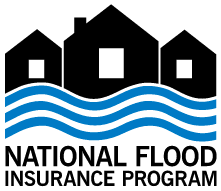A number of bills aimed at reforming the U.S. National Flood Insurance Program (NFIP), in order to make it a more sustainable system and to factor in more private market insurance and risk transfer, have been passed by the House Financial Services Committee and will now move onto the full House of Representatives for deliberation.
 Among the bills passed by the Financial Services Committee are those calling for a greater use of private market risk transfer, to shift risk away from the government and ultimately taxpayers, including ones calling for the use of both traditional reinsurance and the capital markets in the form of flood catastrophe bonds.
Among the bills passed by the Financial Services Committee are those calling for a greater use of private market risk transfer, to shift risk away from the government and ultimately taxpayers, including ones calling for the use of both traditional reinsurance and the capital markets in the form of flood catastrophe bonds.
With the NFIP authorisation set to expire September 30th this year, many bills have been tabled that call for wide-ranging review and reform, as well as for the reauthorisation of the NFIP beyond its expiration date.
Five bills were passed by the Financial Services Committee yesterday, with a number calling for reforms that would open up flood risk to the private insurance markets, along with calls for greater use of reinsurance and risk transfer to shrink and de-risk the NFIP.
Notable is the fact that two bills explicitly recognise the ability of the capital markets to be a source of reinsurance capacity and that flood risks could be ceded to investors using instruments such as catastrophe bonds.
Bill HR 2246, the Taxpayer Exposure Mitigation Act of 2017, from Rep. Blaine Luetkemeyer (R-MO), calls for some of the NFIP’s flood risk to be ceded to the private reinsurance and capital markets each year, and names cat bonds, collateralized reinsurance, insurance-linked securities (ILS), or resilience bonds as possible vehicles for achieving that goal.
Bill HR 2875, the National Flood Insurance Program Administrative Reform Act of 2017, sponsored by Rep. Nydia Velazquez (D-NY), calls for a flood insurance advisory committee to be established with one member being from the financial markets with experience in “risk transfers, including reinsurance, resilience bonds, and other insurance-linked securities (ILS).” This committtee would look at issues around risk reduction, private market involvement and risk transfer.
So there are positive signs that the initiatives looking to de-risk the NFIP further will at least get an airing in the full House, although there is no guarantee any of these bills will proceed further, as there remain many contentious issues in all of them.
House Financial Services Committee Chairman Jeb Hensarling (R-TX) commented on the passing of these bills; “While we have a responsibility to provide certainty to the homeowners and small business owners who rely on the NFIP for protection, we must also ensure that the program protects the interests of hardworking taxpayers.
“These reform bills will benefit all Americans because they will invite private sector competition and lead to a sustainable flood insurance program – sustainable for homeowners, small business owners, residential and commercial real estate markets, and sustainable for hardworking taxpayers.”
The NFIP reform agenda comes up repeatedly and aside from these specific bills there are other legislative discussions underway which also feature talk of flood cat bonds and risk transfer.
FEMA has of course already begun to tap the traditional reinsurance markets for risk transfer capacity, a practice that it is expected will continue.
That naturally will result in the capital markets and ILS being assessed, as the NFIP’s brokers work towards its renewal, which should mean cat bonds come up as an option.
What really needs to be enshrined in legislation is a mandate for the NFIP to de-risk itself as much as possible, making use of all available reinsurance and capital market risk transfer options as appropriate. That alongside legislation to drive more of the primary insurance policies into private insurance markets would help the U.S. government reduce the taxpayer burden while ensuring more flood risk opportunities for the ILS market in years to come.
Also read: Flood cat bonds? Flood sidecars? How can the NFIP de-risk using ILS?
Just a few weeks until our ILS Asia 2017 conference, get your ticket now.

 View all of our Artemis Live video interviews and subscribe to our podcast.
View all of our Artemis Live video interviews and subscribe to our podcast.
All of our Artemis Live insurance-linked securities (ILS), catastrophe bonds and reinsurance video content and video interviews can be accessed online.
Our Artemis Live podcast can be subscribed to using the typical podcast services providers, including Apple, Google, Spotify and more.































